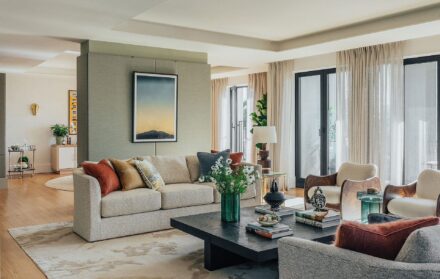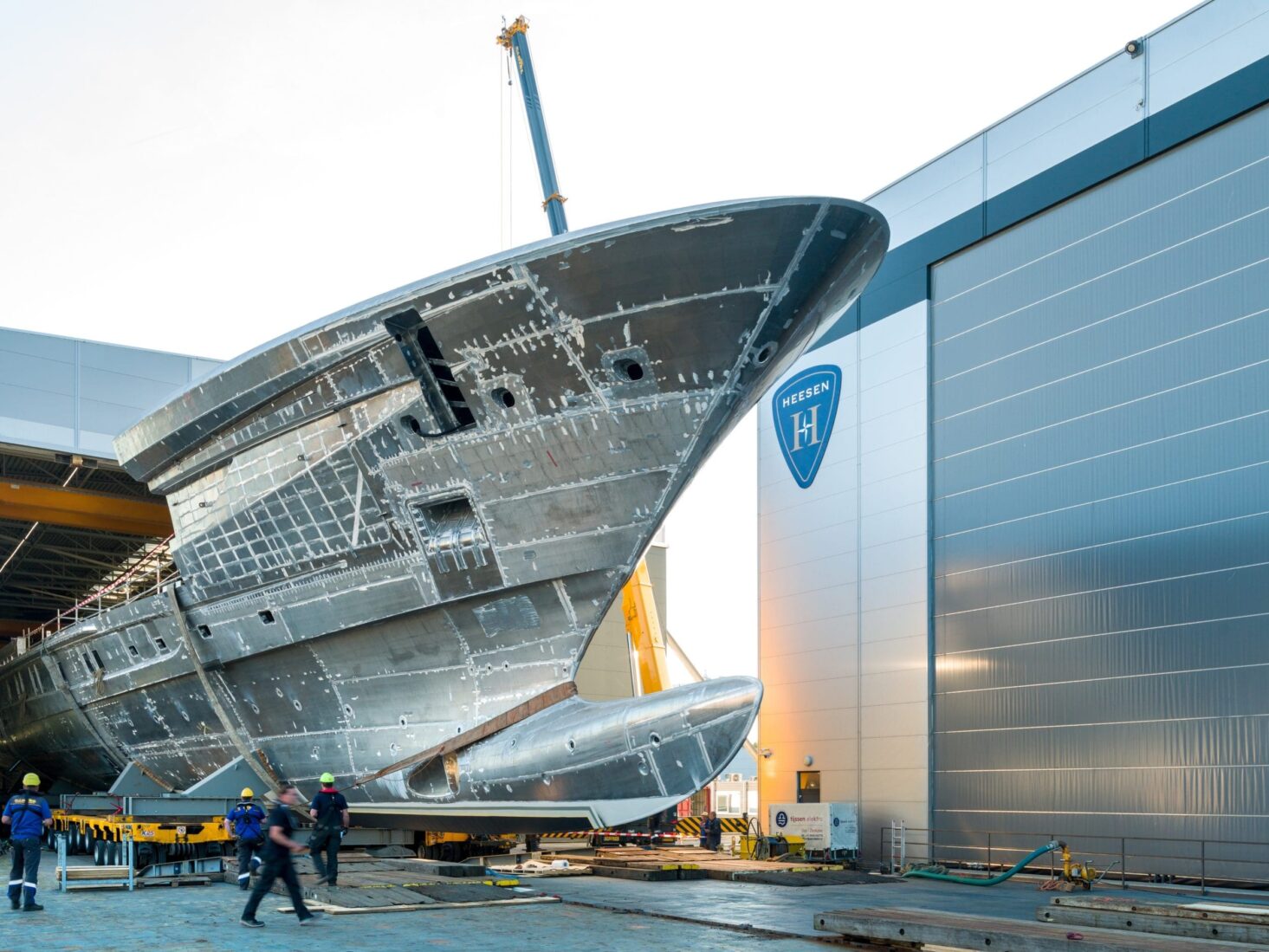
Project Cosmos: Heesen Yachts is building the world’s largest, fastest full-aluminium superyacht
Despite measuring the length of more than five buses, Cosmos will be capable of speeds of almost 30 knots (35mph) thanks to its patented keel construction
The problem with building a superyacht above a certain size, Mark Cavendish, director of sales and marketing at Heesen Yachts, is explaining to me, through the medium of Zoom, from the shipbuilder’s headquarters in Oss, Holland, is that when you go above 50 metres, or so, the boat has the potential to straddle two waves at the same time. Not so much of an issue, he says, if that boat is made from good-old-fashioned steel.
When, however, that boat is made from lighter-weight, more malleable aluminium, for the purposes of speed and fuel efficiency, there’s the possibility of the unsupported section of the boat flexing in the middle. Which would be a problem, potentially a catastrophic one.
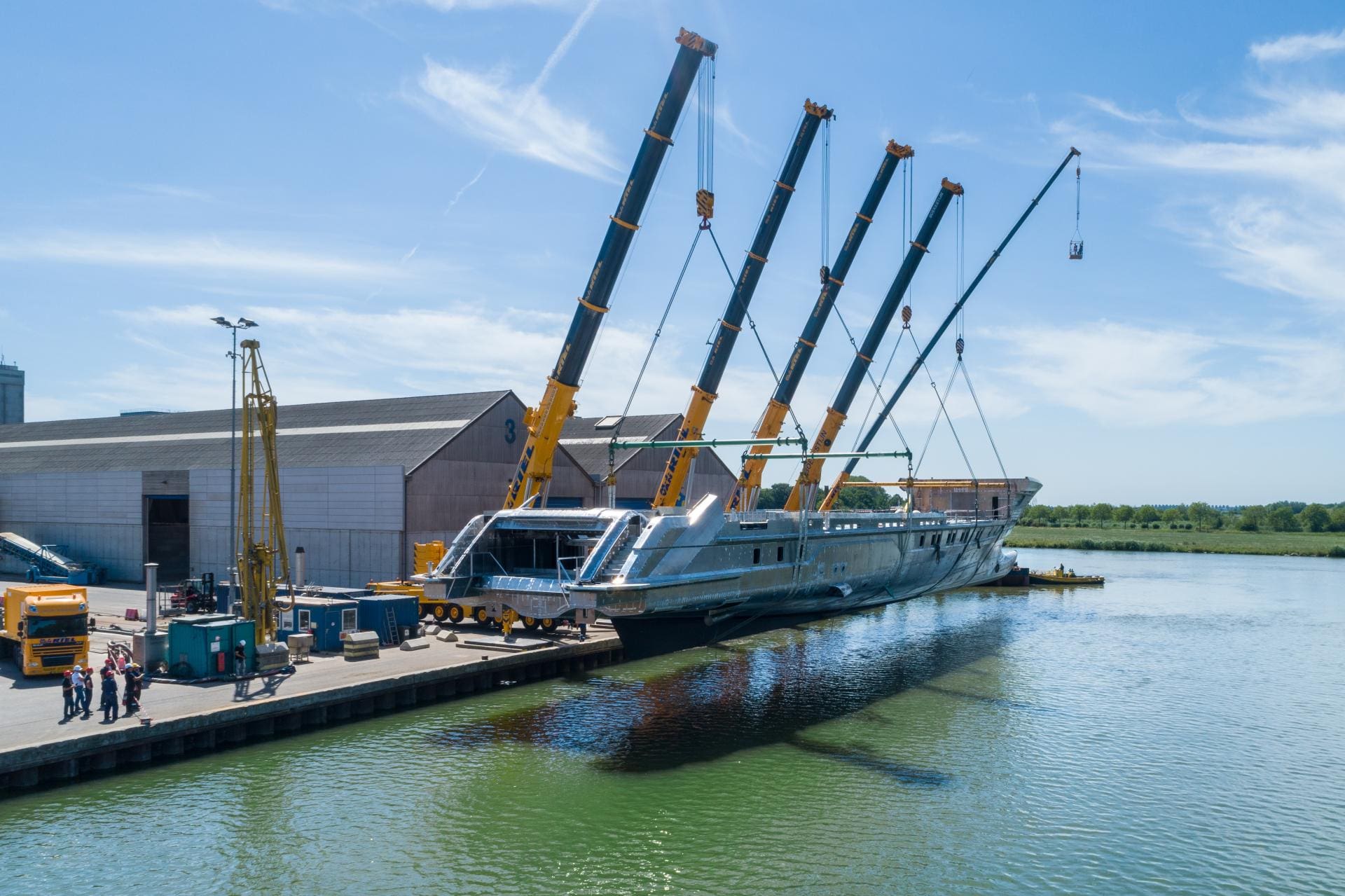
To ensure that Cosmos, Heesen’s largest boat to date, was stiff enough to ride two waves at once, the firm’s engineers had to devise a completely new, spine-like construction method, a technology they appropriately patented ‘Backbone’.
Thanks to this new, ground-breaking construction technique – and four enormous V20 diesel engines which, between them, are capable of producing 19,000hp – the streamlined, shallow-hulled Cosmos is set to become the world’s fastest, largest, all-aluminium superyacht when it launches – global pandemics willing – in November 2021.
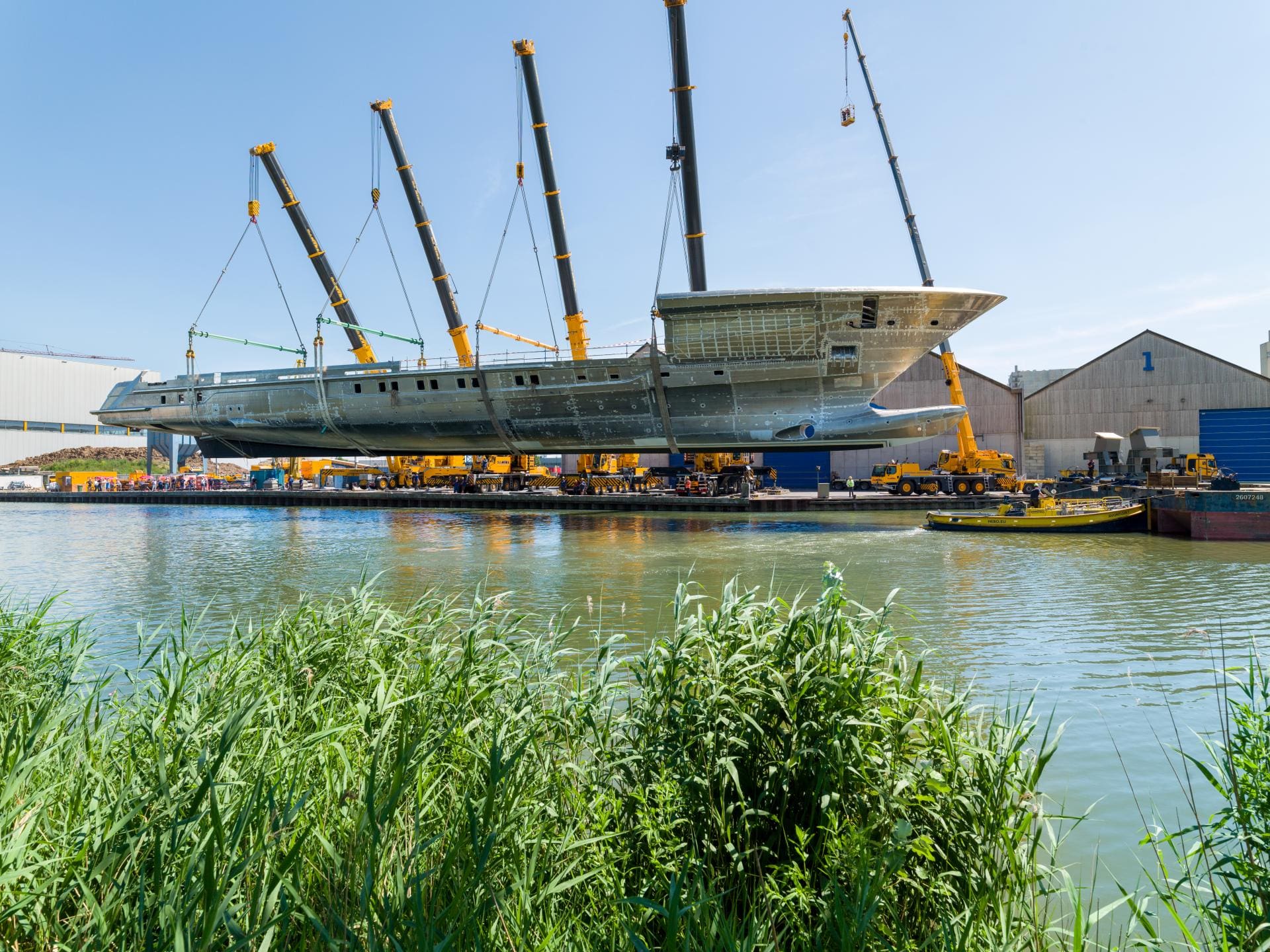
The exterior of the yacht is the work of naval architects Winch Design, which, as per the owner’s brief, has decorated Cosmos with a 270 sq m sun deck; a helicopter landing area that doubles as an outdoor cinema; a seven-metre, glass-bottomed swimming pool; a beach club with a sunken walk-around bar; and, sure to clinch any game of superyacht Top Trumps, a waterfall that plunges from one deck to another.
Last week, as the hull of the boat was married to its pioneering superstructure, Luxury London spoke to Heesen’s Cavendish and James Russell, exterior associate at Winch Design, about Cosmos’ cutting-edge construction and the challanges of building a superyacht during the coronavirus outbreak.
Q&A: Mark Cavendish, Director of Sales and Marketing, Heesen Yachts & James Russell, Associate Yacht Exterior, Winch Design

How has Heesen been affected by Covid-19?
Cavendish: We’ve remained largely unaffected because of the way we’ve managed the situation. We never had to shut the shipyard, so work has continued pretty much as normal. We had a small drop in productivity because we did have some illnesses but none of the yachts we’re building for owners have been delayed, everything is still on track.
At which stage of construction is Project Cosmos?
Cavendish: We started construction in February 2019 and last week joined the hull and the superstructure. That’s about average. It usually takes between 14 and 15 months from when you start construction to when you finish the hull. We’re aiming to launch in November 2021 and handover to the owner in April 2022.
Presumably most superyachts of this size are built-to-order, or do you sometimes build superyachts speculatively?
Cavendish: We do do that at Heesen, build smaller boats speculatively, but only really up to 50 or 55 metres. You would never build something this big and this expensive as a speculative project.
Presumably, too, boats of this size are commissioned by clients who have already owned a superyacht, or superyachts, or do you occasional get the novice superyacht buyer?
Cavendish: At this size you don’t typically get too many first-time buyers. This owner has had many, many yachts before and of course like most people started with a much smaller yacht and over the years has moved up to this, and that’s a pretty well-trodden path in our business. Even someone coming in and buying a 50-metre yacht as a first yacht is pretty unusual.

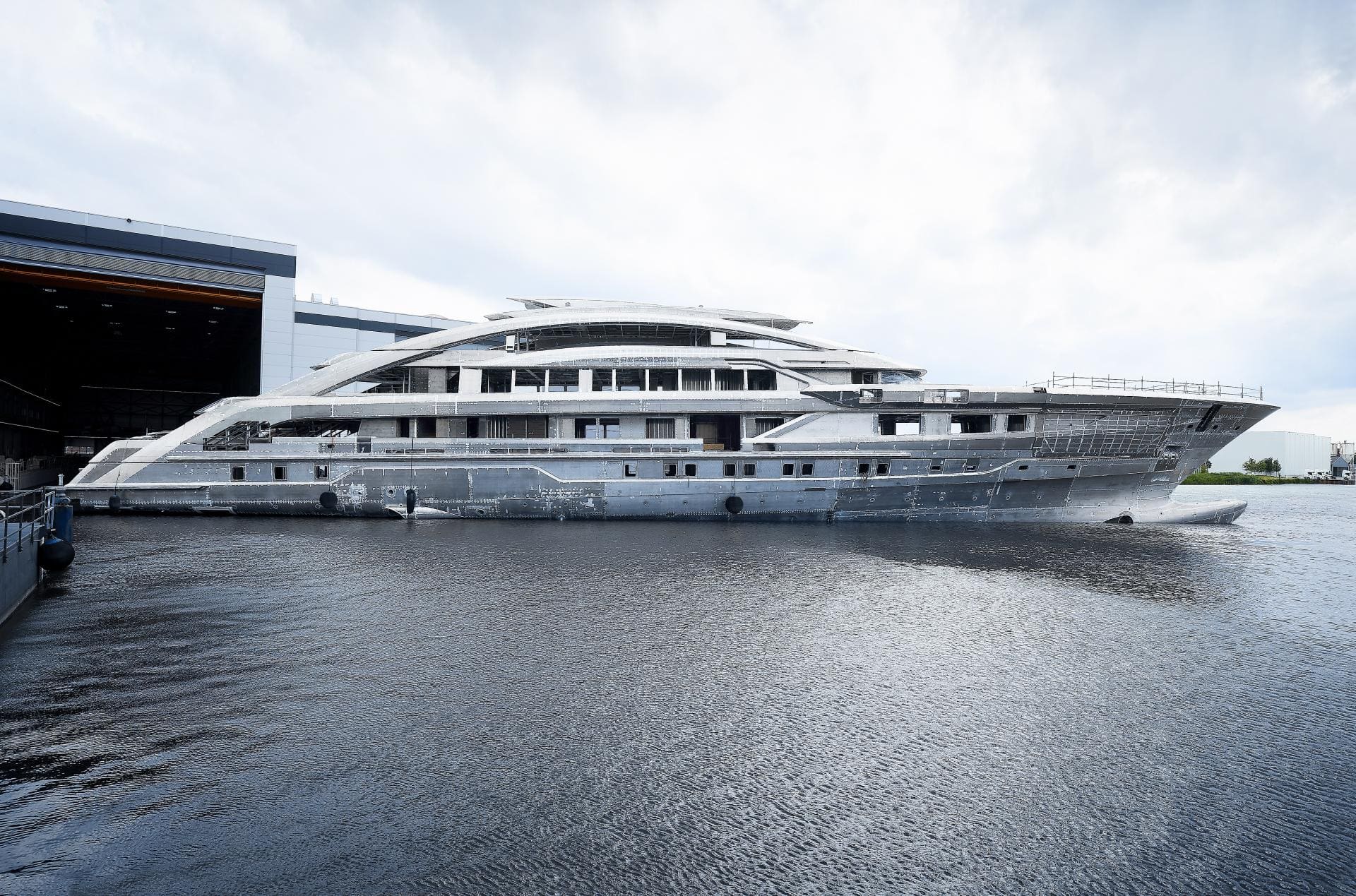
What was the design brief with Cosmos?
Russell: The owner wanted a sporty, modern, timeless design. They wanted elegant lines and some modern surfacing – so we didn’t want to do anything too radical. They didn’t want anything too crazy.
What makes Cosmos different to other superyachts?
Russell: There are a lot of technical calculations and analysis that goes into a project like this. There’s been a lot of calculations to do with the rigidity of the hull. We [Winch] have the easy job, relative to that side of things – we make the boat look pretty. There have been a few compromises we have to make – not too many sharp corners on the hull, for example, as we don’t want any cracking. But everything on this project is fully customised for this specific owner so it really is a one-of-a-kind. Even down to the colour scheme – the grey on the hull, that’s a one-off colour that’s been developed for Heesen.
How does the patented Backbone technology work?
Cavendish: With a boat like this, one that’s made of aluminium, which, of course, is a softer metal than steel, which would be too heavy for a boat like this, you need to achieve a certain structural rigidity. To explain the Backbone quite simply, it’s more or less like the conventional ‘I’ beam girder used in regular construction, where you’ve got a horizontal member and two vertical ones and that gives it enormous rigidity. In the boat we have a similar process. The top beam, for instance, will be the deck; the bottom of the beam is the keel, and then in the middle you have the vertical structures that provide the rigidity.
Other than rigidity, what are the other challenges of building a boat this big?
Russell: One of the main issues we have to contend with when working with Heesen is the number of bridges the boat has to pass under before it gets to sea. With Cosmos, we’ve incorporated this big arch design so we had to think about how we were going to split that architecture so that essentially the roof of the boat could be lifted off and taken to another location.
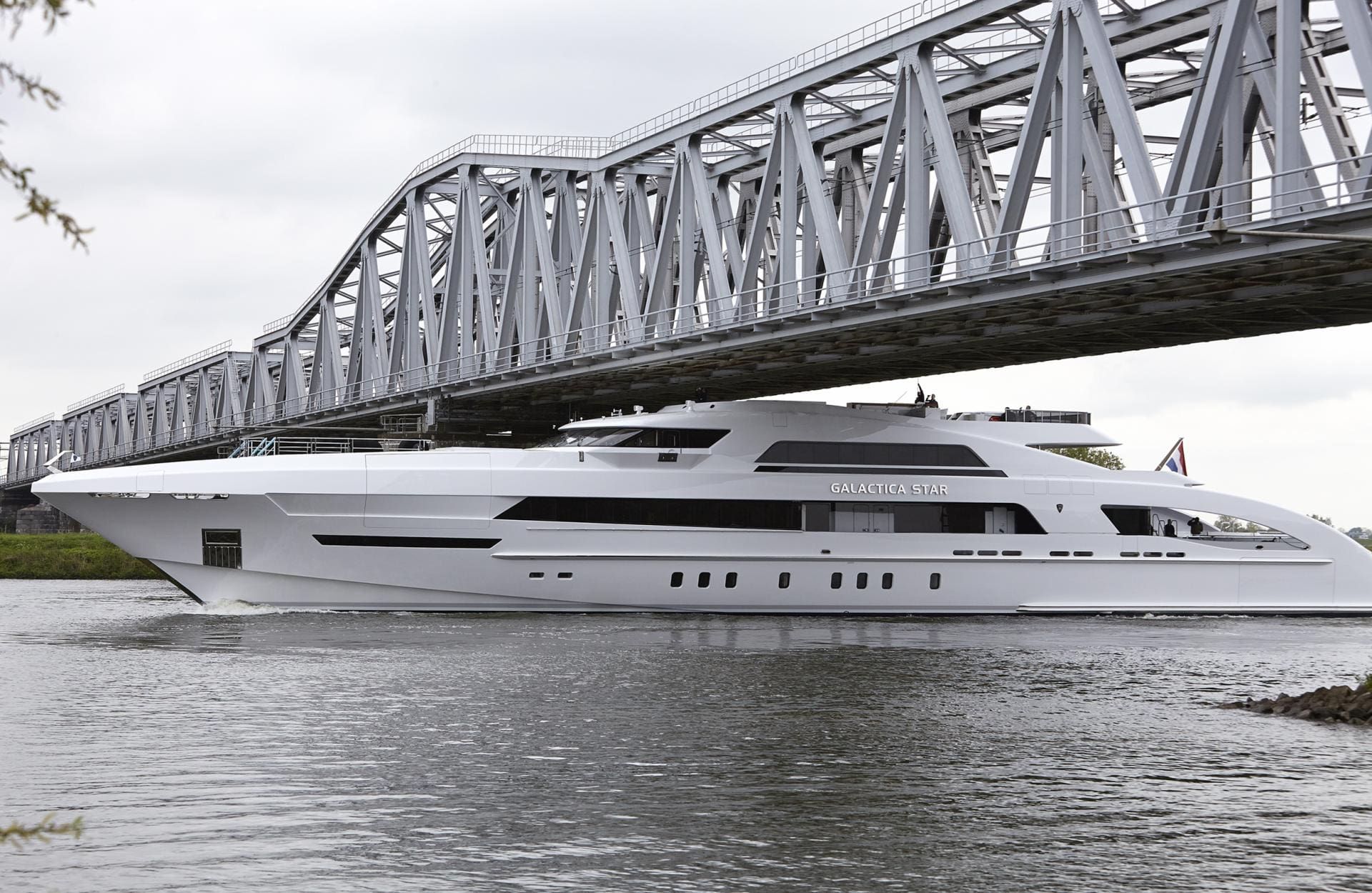
What lifestyle features have gained the most popularity in recent years?
Russell: glass-bottom pools and beach clubs have become very popular. Traditionally the tender garage is down on the lower deck whereas on this project all the tenders are on the main deck, in front of the owner’s cabin. So that opens up that whole space for a beach club and wellness area. Access to the ocean has become very important. Owners want to come out, open the stern door or the side door, have a swim, come in, have a sauna, have a Hamman and then jump in the pool on the main deck – so that whole main-deck-lower-deck connection to the ocean has become key.
How about helipads?
Russell: Yes, the helipad is becoming more and more of a thing. On this project, it’s fairly unusual to have a certified helipad, normally it’s a touch and go helipad, which means it’s at the captain’s and owner’s discretion if they want a helicopter to land and take off again. A certified helipad needs to be completely free of obstacles. Here, the owner wanted a cinema screen on the bow, a five-metre by three-metre screen, which is huge, so we had to make it completely retractable. The settees and speakers, too, sink into the deck so that everything is completely flush when a helicopter lands.
How often do helipads actually get used?
Russell: Rarely, to be honest. It’s dependent on every owner, but sometimes they’ll never be used.
So does that make them a bit of a waste of space?
Cavendish: On a boat as big as Cosmos you’re going to have deck space big enough for helipads, so it’s not really a massive leap to incorporate one. If it was a 50-metre boat, then it really would be a challenge – it would affect the whole design of the boat. Of course, when you get to boats over 100 metres in length, sometimes they have two helipads – one on the front and one the back.

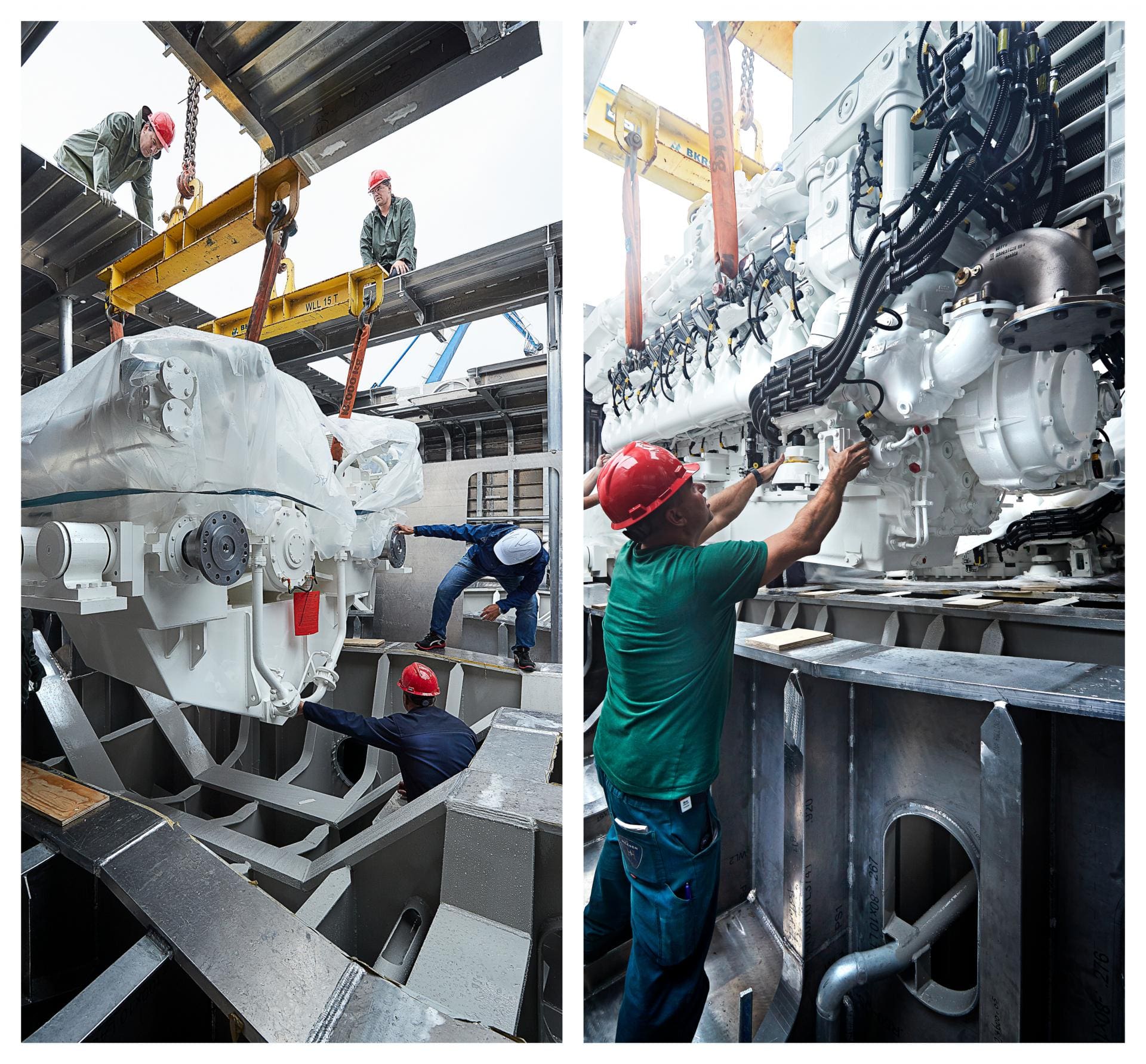
What’s the number one feature / accessory that every client tends to have at the top of their wish-list?
Russell: Every owner wants something unique and they all have different requests so the brief is different every time. Glass is becoming more popular – bigger, floor-to-ceiling windows, for example. Beach clubs are becoming much more of a thing; bigger tenders and toys; people are asking for submarines, more jet skis, sea bobs, everything you can imagine, the list is endless.
Is it possible to predict what impact coronavirus will have on the superyacht industry in the long term?
Cavendish: It’s very difficult to say. It could go one of two ways; we could either see a recession and therefore a difficult time for the yacht building industry, or you could take the opinion that a yacht is a huge asset in today’s world. If you’ve got a private plane and a yacht it’s a controlled environment that you’re in, you don’t have to go through any public spaces. I saw an article the other day that said in the States the sale of boats smaller than we build, so boats up to about 70 or 80 feet, have absolutely gone through the roof. All the dealers and sellers of this kind of family yacht have pretty much sold out because people can’t travel to Europe for their summer holidays so they’ve all thought ‘let’s buy a boat and cruise around the United States’.
To what extent is the superyacht industry recession-proof?
Cavendish: Back in 2008 our business suffered like pretty much every other business. There were some owners who genuinely could no longer afford to go ahead with their boats and others that for public or publicity reasons did not want to be seen taking delivery of an enormous yacht when their businesses were laying off hundreds of people. But every cloud has a silver lining; there were some cancelled orders but then other people came along and picked up those opportunities, getting a yacht that was half or three quarters built at something of a good price.
And lastly, if you could be on boat anywhere in the world right now, where would it be?
Cavendish: Somewhere in the South Pacific.
Russell: Fiji would be pretty incredible.
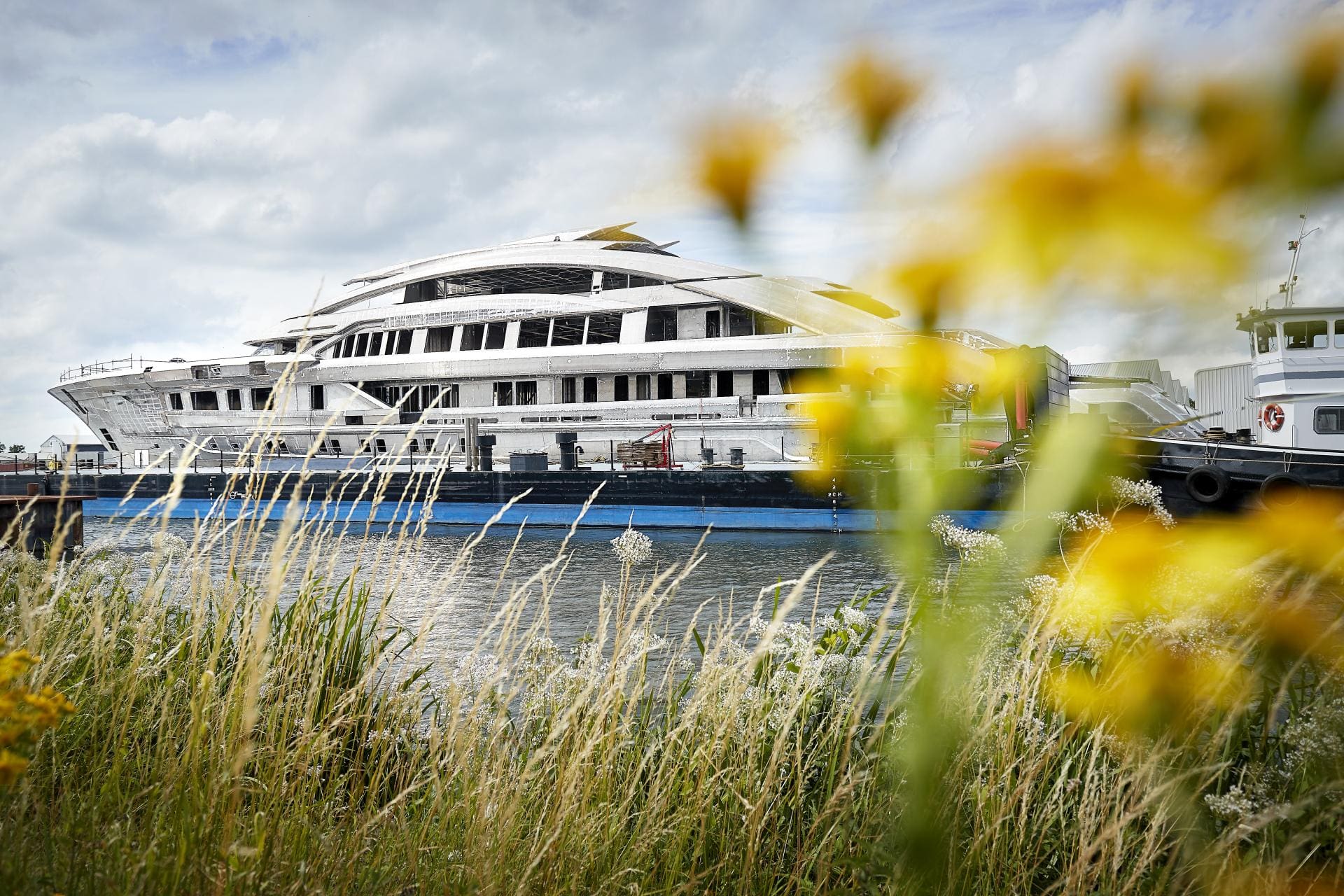
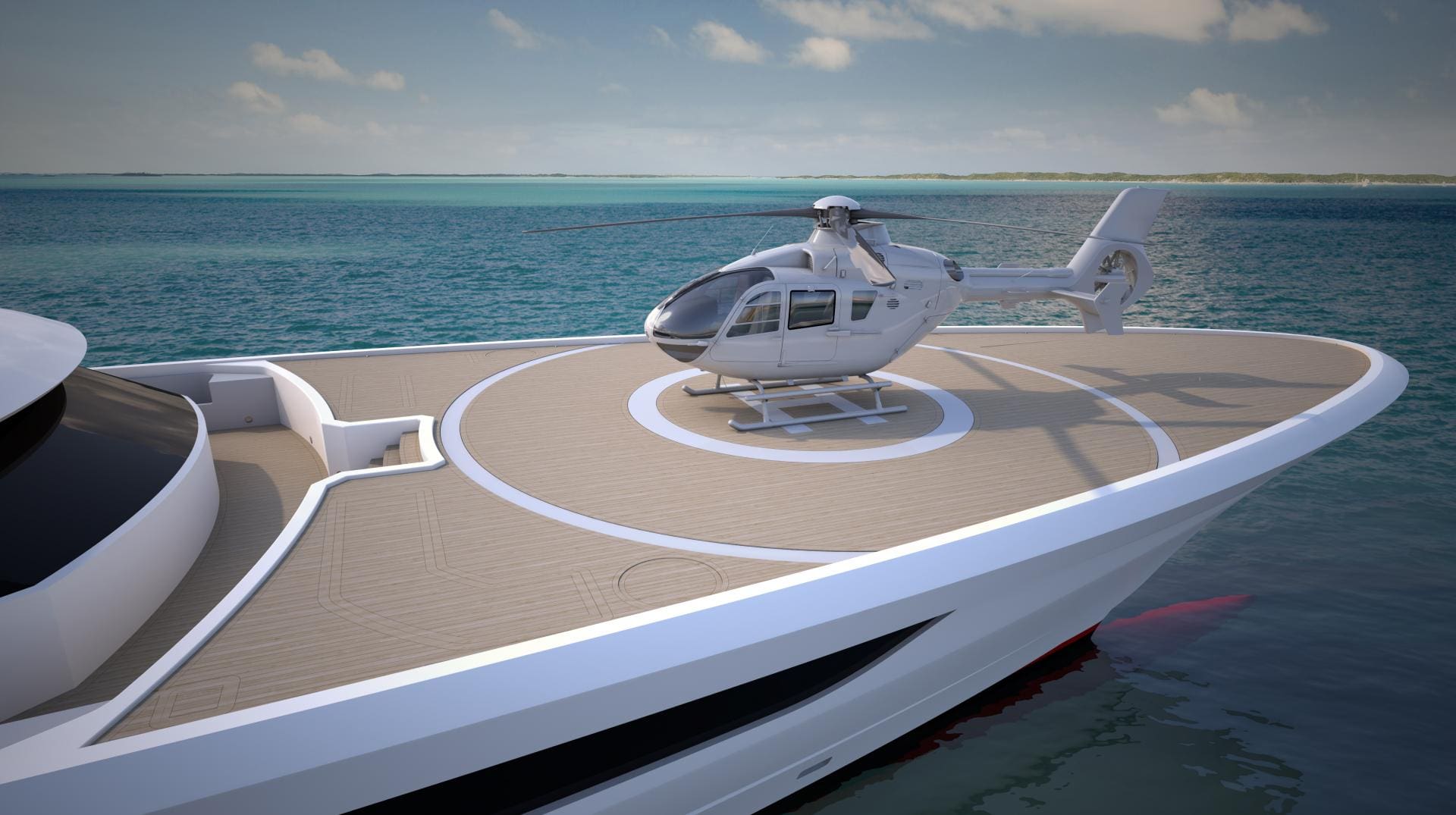
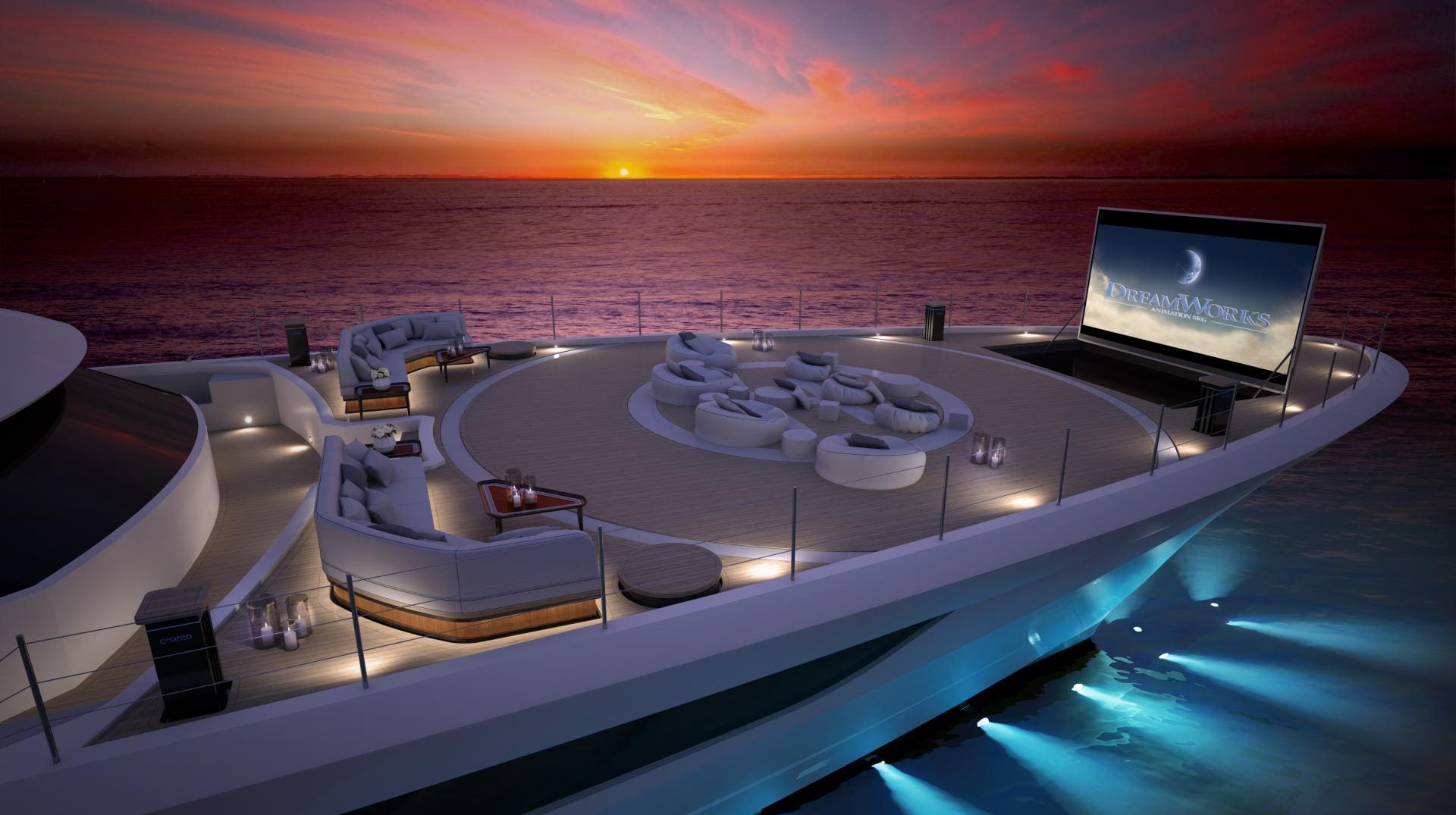
Cosmos will sleep 12 guests and 19 crew, heesenyachts.com







